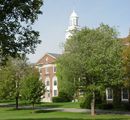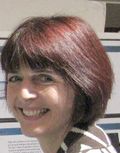Biology and physiology of stem cells in the CNS
The scope of this symposium is still being determined; more details will be added soon.
Session organizer
Dr. Margot Mayer-Pröschel is Associate Professor in the Department of Biomedical Genetics, University of Rochester, NY.
Dr. Mayer-Pröschel received her diploma in microbiology from Julius Maximilian University, Germany in 1986. She received her Ph.D. in Virology/Microbiology from the Inst. Of Virology & Immunology at the University of Wurzburg, studying under Dr. V. ter Meulen. She performed postdoctoral research at the Ludwig Institute for Cancer Research, London, UK with Prof. Mark Noble, then in 1995 joined the Huntsman Cancer Institute at the University of Utah as an assistant professor. In 2000 she joined the Department of Biomedical Genetics at the University of Rochester. She is now also a member of the Rochester Stem Cell and Regenerative Medicine Institute.
Dr. Mayer-Pröschel's research aims to understand the biological and molecular mechanisms governing precursor cell division, differentiation and survival in the brain.
- Identification of lineage restricted precursor cells
- CNS precursor cells and their derivatives in human disease and tissue repair paradigms: Gestational iron deficiency, Ataxia Telangiectasia (AT), spinal cord injury repair and human viral infections as a contributor to failure of repair.
Confirmed speakers
- Prof. Bonnie Firestein, Dept. of Cell Biology & Neuroscience, Rutgers University.
- Prof. Christoph Pröschel, Department of Biomedical Genetics, University of Rochester.

